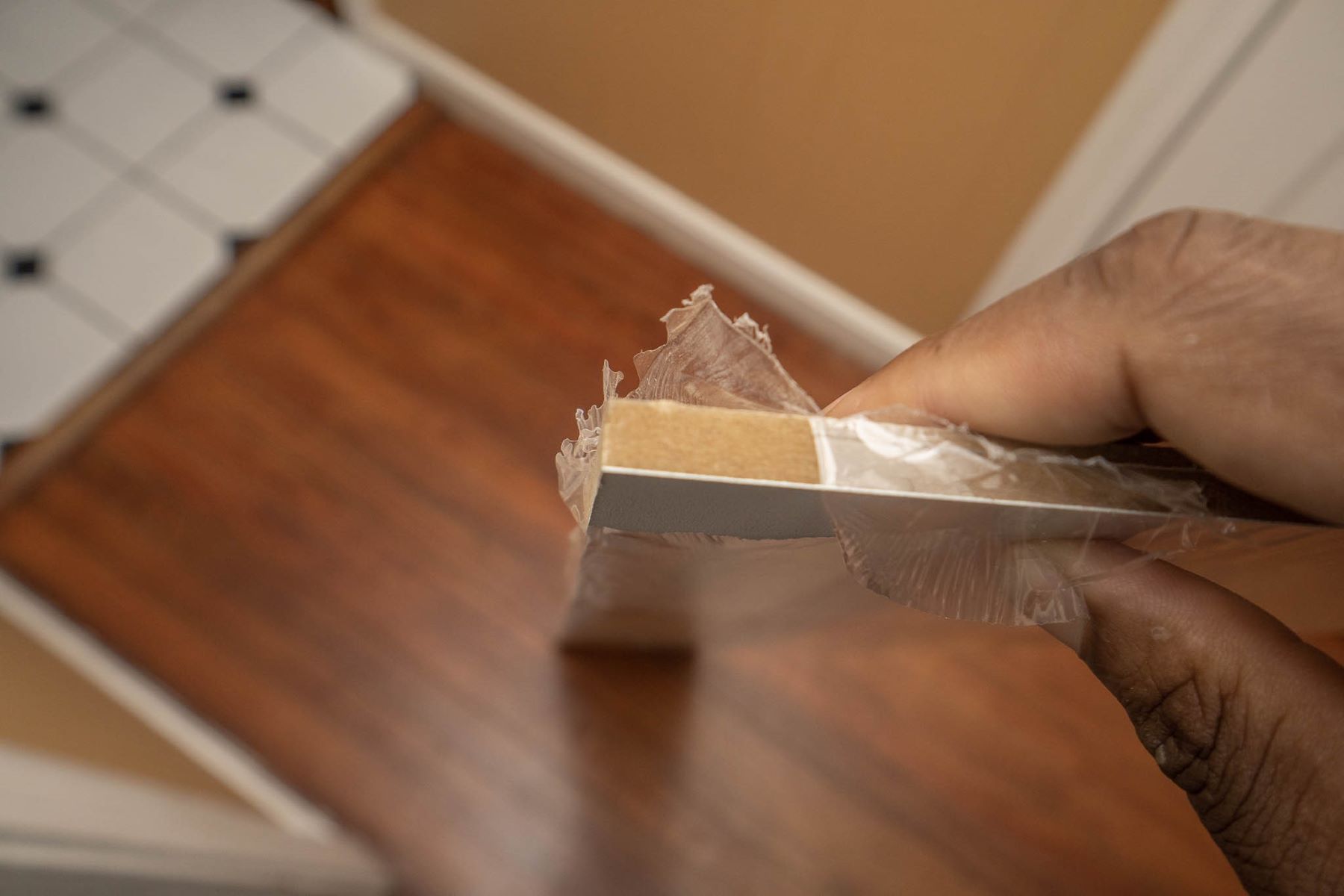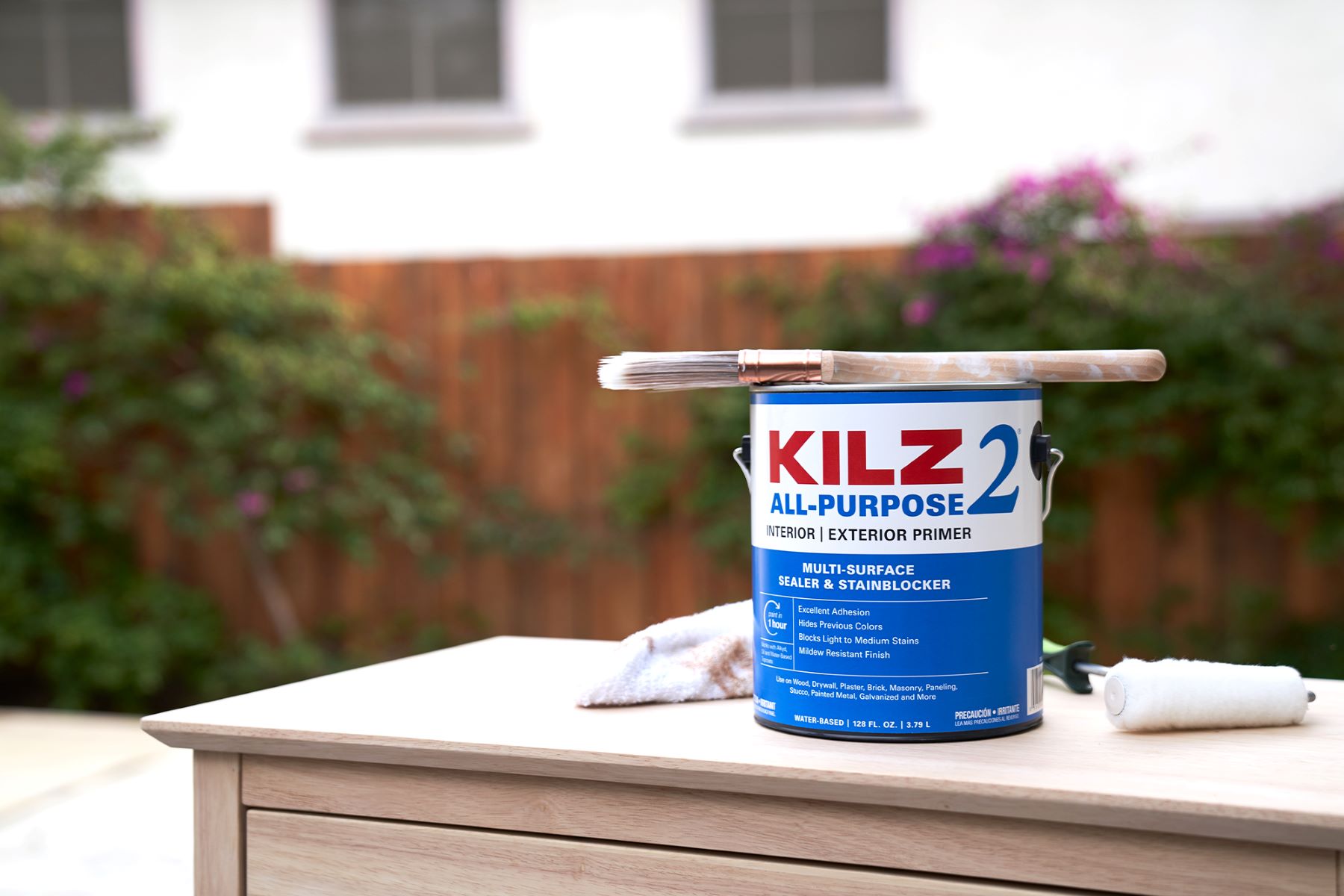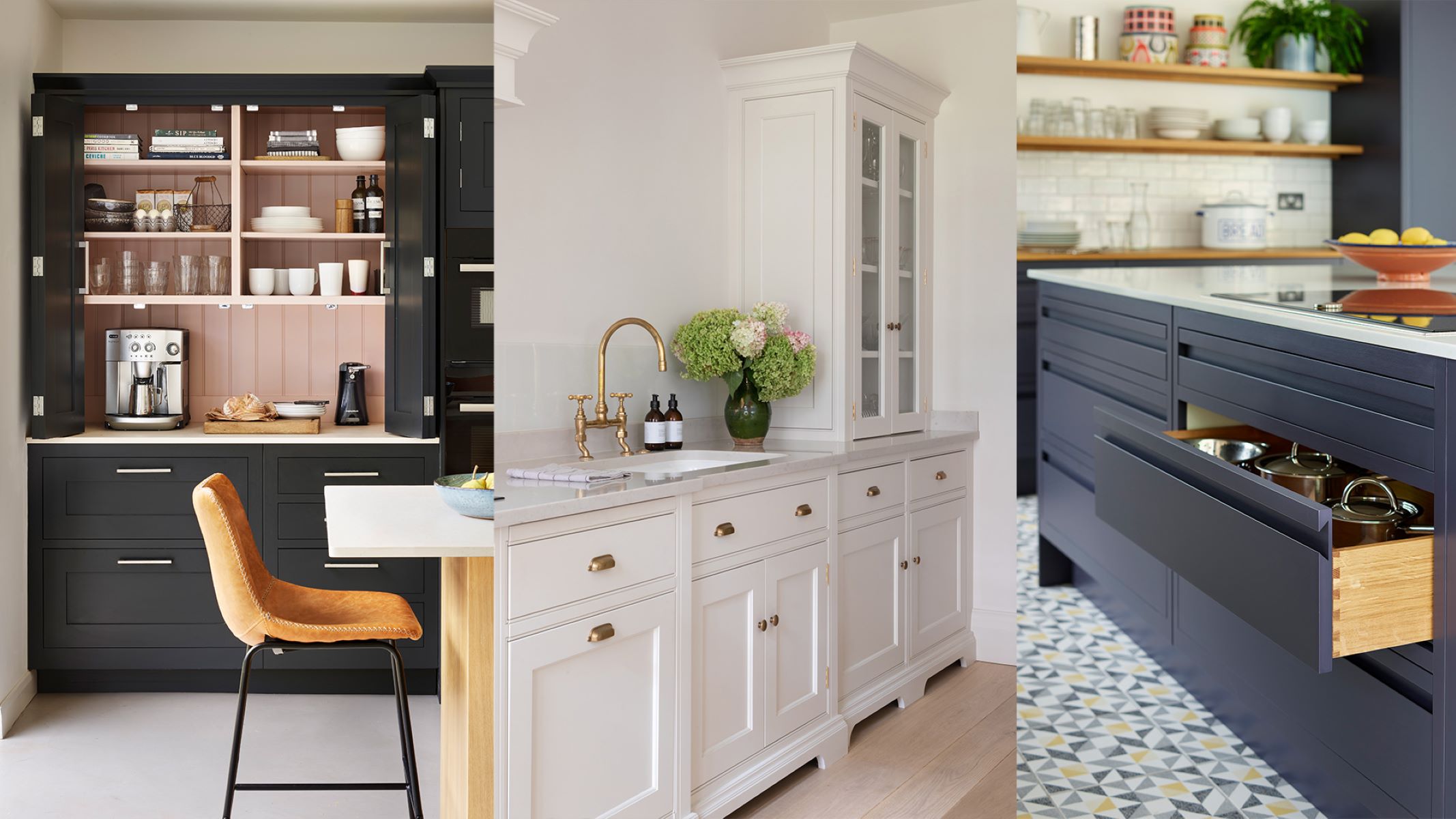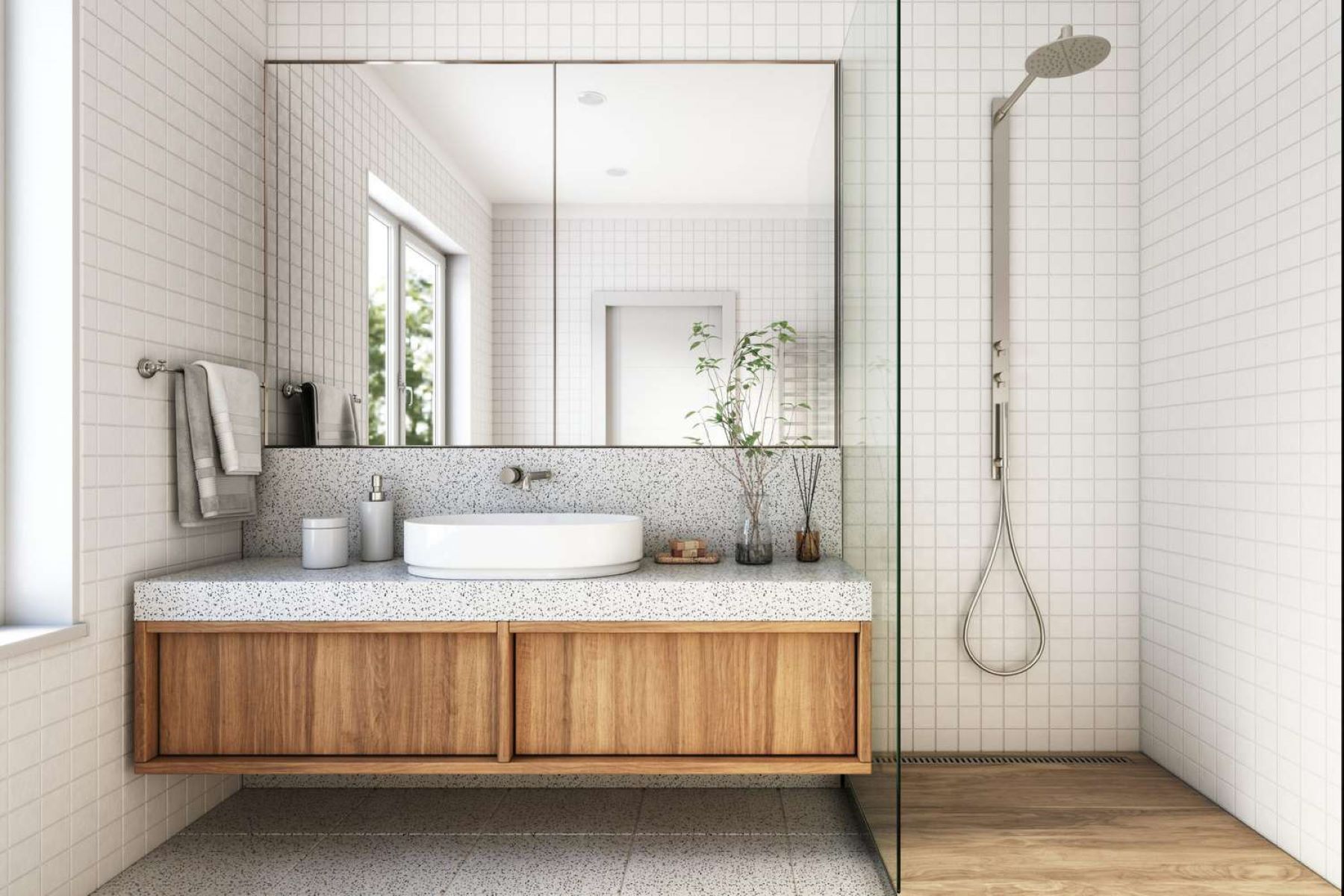Home>Home and Garden>The Best Paint Finish For Trim: Satin Or Semi-Gloss?
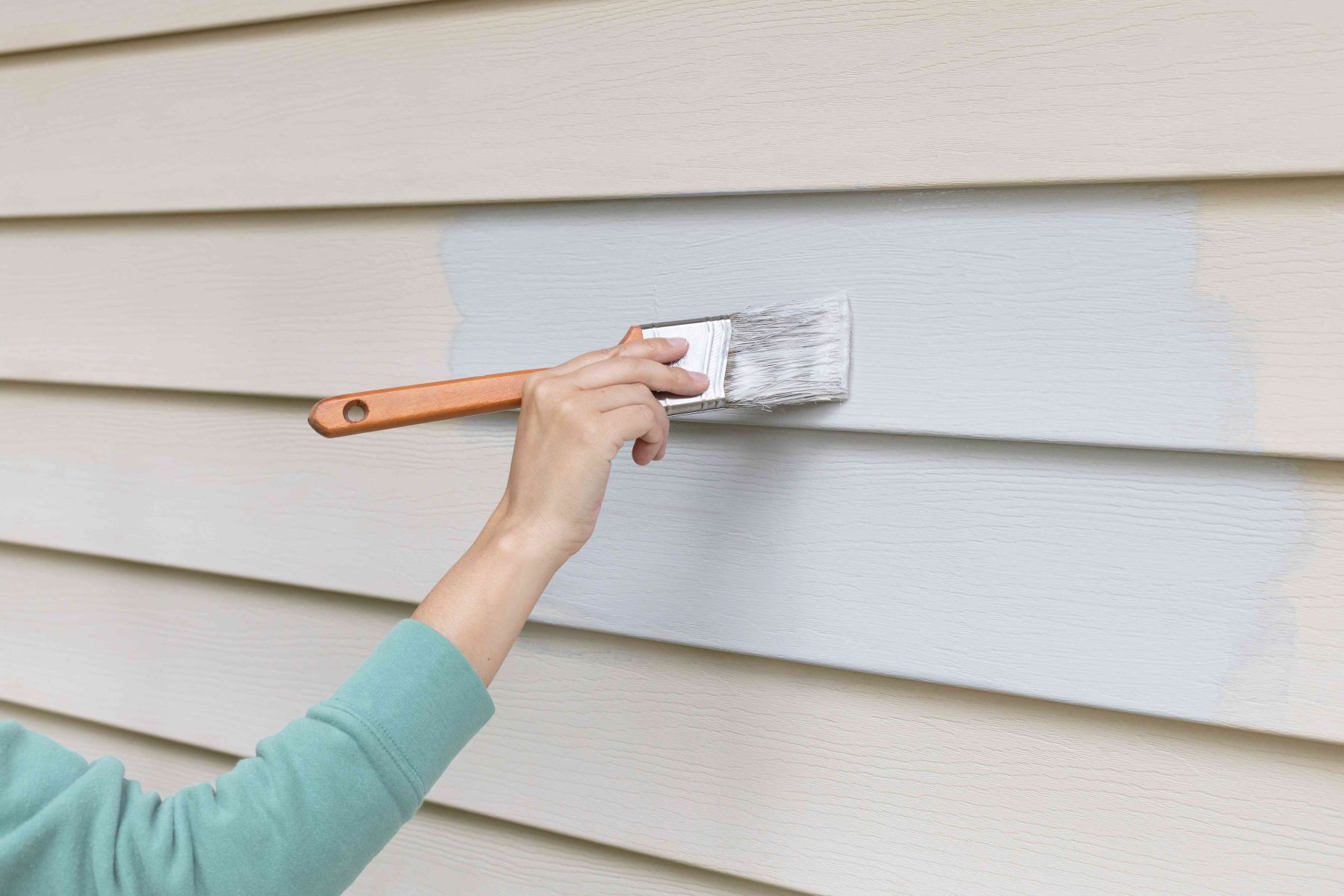

Home and Garden
The Best Paint Finish For Trim: Satin Or Semi-Gloss?
Published: January 17, 2024
Discover the ideal paint finish for trim in your home. Compare the benefits of satin and semi-gloss finishes for a perfect home and garden aesthetic.
(Many of the links in this article redirect to a specific reviewed product. Your purchase of these products through affiliate links helps to generate commission for Regretless.com, at no extra cost. Learn more)
Table of Contents
Introduction
When it comes to interior design and home improvement, the choice of paint finish for trim can significantly impact the overall aesthetic appeal of a space. The trim, including baseboards, door casings, and window frames, plays a crucial role in defining the architectural character of a room. Selecting the right paint finish for trim is vital for achieving a polished and cohesive look in any home. Two popular options that homeowners often deliberate over are satin and semi-gloss finishes.
The debate over whether to use satin or semi-gloss for trim has sparked numerous discussions among homeowners, interior designers, and DIY enthusiasts. Each finish has its unique characteristics and benefits, making the decision a matter of personal preference and practical considerations. Understanding the attributes of satin and semi-gloss finishes, along with their respective pros and cons, is essential for making an informed choice that aligns with the desired style and maintenance requirements.
In this comprehensive guide, we will delve into the nuances of satin and semi-gloss finishes for trim, examining their distinct qualities and the impact they can have on the overall look and feel of a room. By exploring the advantages and potential drawbacks of each finish, as well as the key factors to consider when making a decision, homeowners and design enthusiasts will gain valuable insights to aid them in selecting the best paint finish for their trim. So, let's embark on this journey to unravel the mysteries of satin and semi-gloss finishes and determine which option reigns supreme for achieving the perfect trim in your living space.
Read more: How To Paint Clouds
What is Satin Finish?
Satin finish is a popular choice for trim due to its unique blend of characteristics that offer a balance between matte and glossy surfaces. This finish is known for its subtle sheen, which imparts a soft, velvety appearance to the trim. Unlike flat or matte finishes, satin reflects a moderate amount of light, adding a touch of elegance and sophistication to the trim without being overly reflective.
The satin finish is formulated to provide durability and ease of maintenance, making it an ideal option for high-traffic areas such as baseboards and door casings. It offers a smooth texture that is resistant to stains and smudges, allowing for easy cleaning with a gentle wipe-down. This makes satin finish trim a practical choice for homes with children and pets, where accidental spills and scuff marks are common occurrences.
Furthermore, satin finish paint is versatile and complements various interior styles, from modern and contemporary to traditional and transitional. Its understated sheen adds a subtle visual interest to the trim, enhancing the overall aesthetic appeal of the room without overpowering other design elements. Whether used in a living room, bedroom, or hallway, satin finish trim exudes a timeless charm that elevates the architectural details of the space.
Another advantage of satin finish is its ability to conceal imperfections and minor flaws on the trim surface. This makes it an excellent choice for older homes or trim with subtle blemishes, as the low sheen helps to minimize the appearance of small dents or uneven textures. Additionally, the smooth finish of satin paint contributes to a seamless and refined look, creating a cohesive backdrop for the room's decor and furnishings.
In summary, satin finish for trim offers a harmonious blend of aesthetics and functionality. Its gentle sheen, durability, versatility, and ability to mask minor imperfections make it a compelling choice for homeowners seeking a sophisticated yet practical option for their trim painting projects. Whether aiming for a classic, understated elegance or a modern, streamlined look, satin finish trim can effortlessly enhance the overall ambiance of any living space.
What is Semi-Gloss Finish?
Semi-gloss finish is a versatile and popular option for trim due to its distinct attributes that offer both aesthetic appeal and practical benefits. This finish falls between the extremes of matte and high gloss, striking a balance that makes it suitable for various interior design styles and functional requirements. Characterized by its moderate sheen and reflective properties, semi-gloss finish trim exudes a subtle luster that adds depth and visual interest to the architectural elements of a room.
One of the key advantages of semi-gloss finish is its exceptional durability and resistance to wear and tear. The smooth, glossy surface not only enhances the aesthetic appeal of the trim but also provides a protective shield against moisture, stains, and impacts. This makes semi-gloss finish trim an ideal choice for areas prone to high traffic, such as baseboards, door frames, and window casings, where it can withstand daily wear while maintaining its pristine appearance.
In addition to its robust nature, semi-gloss finish offers practical advantages in terms of maintenance and cleanliness. The smooth, non-porous surface of semi-gloss trim allows for easy cleaning and is resistant to moisture, making it suitable for areas prone to splashes and spills, such as kitchens and bathrooms. Its ability to repel stains and smudges ensures that the trim retains its polished look with minimal effort, making it a practical choice for busy households and commercial spaces.
Furthermore, the reflective properties of semi-gloss finish contribute to the visual impact of the trim, creating a sense of depth and dimension within the room. The subtle sheen adds a touch of elegance and sophistication, making the trim a standout feature that complements the overall design scheme. Whether used in a contemporary setting to accentuate clean lines and modern aesthetics or in a traditional space to highlight architectural details, semi-gloss finish trim lends a polished and refined touch to any interior.
Semi-gloss finish is also known for its ability to amplify natural and artificial light, contributing to a brighter and more vibrant ambiance within the room. The reflective surface of the trim disperses light, creating a luminous effect that can enhance the perceived spaciousness of the space. This makes semi-gloss finish an excellent choice for smaller rooms or areas with limited natural light, as it can help to visually open up the environment and create a more inviting atmosphere.
In summary, semi-gloss finish for trim offers a winning combination of durability, visual impact, and ease of maintenance. Its moderate sheen, protective properties, and light-enhancing characteristics make it a versatile and practical choice for homeowners and designers seeking to elevate the aesthetic appeal and functionality of their living spaces. Whether aiming for a sleek, contemporary look or a timeless, classic charm, semi-gloss finish trim can effortlessly enhance the overall ambiance of any room.
Pros and Cons of Satin Finish for Trim
Satin finish for trim offers a plethora of advantages, making it a compelling option for homeowners and designers seeking a blend of aesthetics and practicality. Understanding the pros and cons of satin finish is essential for making an informed decision when choosing the ideal paint finish for trim.
Pros of Satin Finish for Trim
-
Subtle Sheen: Satin finish exudes a gentle sheen that adds a touch of elegance and sophistication to the trim, creating a polished look without being overly reflective. This subtle luster enhances the visual appeal of the trim, making it a standout feature in any room.
-
Durability: Satin finish paint is formulated to be durable and resistant to wear, making it suitable for high-traffic areas such as baseboards and door casings. Its robust nature allows the trim to withstand daily use and cleaning, ensuring long-lasting beauty and functionality.
-
Versatility: Satin finish trim complements a wide range of interior design styles, from modern and contemporary to traditional and transitional. Its understated sheen adds a timeless charm to the trim, making it a versatile choice that can adapt to various decorative themes.
-
Conceals Imperfections: Satin finish has the ability to conceal minor imperfections and flaws on the trim surface, making it an ideal option for older homes or trim with subtle blemishes. The low sheen helps to minimize the appearance of small dents or uneven textures, creating a smooth and refined look.
-
Easy Maintenance: Satin finish is easy to clean and maintain, requiring only a gentle wipe-down to remove dust, smudges, and minor stains. This makes it a practical choice for households with children and pets, where accidental spills and scuff marks are common occurrences.
Read more: How To Paint Flowers
Cons of Satin Finish for Trim
-
Limited Reflectivity: The subtle sheen of satin finish may not provide the same level of light reflection and depth as higher gloss finishes. In spaces where a more pronounced sheen is desired, satin finish may not deliver the desired visual impact.
-
Visible Brush Strokes: Due to its moderate sheen, satin finish may accentuate brush strokes and imperfections in the application process. Achieving a smooth and uniform finish with satin paint may require meticulous application techniques.
In summary, satin finish for trim offers a compelling combination of subtle sheen, durability, versatility, and ease of maintenance. While it may have limitations in terms of reflectivity and brush stroke visibility, its overall benefits make it a popular choice for homeowners seeking a sophisticated and practical paint finish for their trim.
Pros and Cons of Semi-Gloss Finish for Trim
Semi-gloss finish for trim offers a myriad of advantages, making it a highly sought-after option for homeowners and designers aiming to strike a balance between aesthetic appeal and practical functionality. Understanding the pros and cons of semi-gloss finish is crucial for making an informed decision when selecting the ideal paint finish for trim.
Pros of Semi-Gloss Finish for Trim
-
Exceptional Durability: One of the standout benefits of semi-gloss finish for trim is its exceptional durability. The smooth, glossy surface not only enhances the visual appeal of the trim but also provides a protective shield against moisture, stains, and impacts. This robust nature makes semi-gloss finish trim an ideal choice for areas subjected to high traffic, such as baseboards, door frames, and window casings, ensuring that it maintains its pristine appearance even with frequent use.
-
Ease of Maintenance: Semi-gloss finish trim offers practical advantages in terms of maintenance and cleanliness. The smooth, non-porous surface allows for easy cleaning and is resistant to moisture, making it suitable for areas prone to splashes and spills, such as kitchens and bathrooms. Its ability to repel stains and smudges ensures that the trim retains its polished look with minimal effort, making it a practical choice for busy households and commercial spaces.
-
Visual Impact: The reflective properties of semi-gloss finish contribute to the visual impact of the trim, creating a sense of depth and dimension within the room. The subtle sheen adds a touch of elegance and sophistication, making the trim a standout feature that complements the overall design scheme. Whether used in a contemporary setting to accentuate clean lines and modern aesthetics or in a traditional space to highlight architectural details, semi-gloss finish trim lends a polished and refined touch to any interior.
-
Light Enhancement: Semi-gloss finish is known for its ability to amplify natural and artificial light, contributing to a brighter and more vibrant ambiance within the room. The reflective surface of the trim disperses light, creating a luminous effect that can enhance the perceived spaciousness of the space. This makes semi-gloss finish an excellent choice for smaller rooms or areas with limited natural light, as it can help to visually open up the environment and create a more inviting atmosphere.
Cons of Semi-Gloss Finish for Trim
- Visible Imperfections: The reflective nature of semi-gloss finish may accentuate imperfections in the trim surface, such as uneven textures or minor blemishes. Careful surface preparation and application techniques are essential to achieve a flawless finish, as any flaws may become more noticeable due to the reflective properties of the semi-gloss surface.
In summary, semi-gloss finish for trim offers a winning combination of durability, visual impact, and ease of maintenance. While it may have limitations in terms of accentuating imperfections, its overall benefits make it a versatile and practical choice for homeowners and designers seeking to elevate the aesthetic appeal and functionality of their living spaces.
Read more: Discover The Best Apartments For Felons
Factors to Consider When Choosing Between Satin and Semi-Gloss
When faced with the decision of choosing between satin and semi-gloss finishes for trim, several key factors come into play, each influencing the overall look, feel, and functionality of the painted surfaces. Understanding these factors is essential for making an informed choice that aligns with the specific requirements and aesthetic goals of the space.
-
Aesthetic Preference: The first consideration when choosing between satin and semi-gloss finishes is the desired aesthetic effect. Satin finish offers a subtle sheen that imparts a soft, velvety appearance to the trim, creating a classic and understated elegance. On the other hand, semi-gloss finish provides a moderate sheen that adds depth and visual interest, contributing to a polished and refined look. Assessing the desired level of sheen and its impact on the overall design scheme is crucial in determining the most suitable finish for the trim.
-
Functional Requirements: The functional aspects of the space play a significant role in the decision-making process. For high-traffic areas such as baseboards and door casings, where durability and ease of maintenance are paramount, semi-gloss finish may be the preferred choice due to its exceptional durability and resistance to wear and tear. Conversely, in spaces where a more subdued sheen is desired, such as bedrooms or formal living areas, satin finish may offer the right balance of aesthetics and practicality.
-
Lighting Conditions: The lighting conditions within the room can influence the choice between satin and semi-gloss finishes. In spaces with ample natural and artificial light, semi-gloss finish can enhance the luminous effect, creating a brighter and more vibrant ambiance. Conversely, in areas with limited natural light, satin finish may be preferred as it can add a touch of warmth and elegance without overpowering the space with excessive reflectivity.
-
Surface Imperfections: Assessing the condition of the trim surface is crucial when deciding between satin and semi-gloss finishes. Satin finish has the ability to conceal minor imperfections and flaws, making it suitable for older homes or trim with subtle blemishes. Conversely, semi-gloss finish may accentuate surface imperfections due to its reflective nature, requiring meticulous surface preparation to achieve a flawless finish.
-
Complementary Elements: Considering the existing design elements and decor within the room is essential for ensuring that the chosen finish harmonizes with the overall aesthetic. Whether the goal is to create a cohesive backdrop for bold furnishings or to highlight architectural details, the chosen finish should complement the existing design elements and contribute to the desired ambiance of the space.
By carefully evaluating these factors, homeowners and designers can make an informed decision when choosing between satin and semi-gloss finishes for trim, ensuring that the selected finish aligns with the specific needs and aesthetic vision of the space.
Conclusion
In the realm of interior design and home improvement, the choice of paint finish for trim holds significant sway over the overall ambiance and functionality of a space. After exploring the nuances of satin and semi-gloss finishes for trim, along with their respective pros and cons, it becomes evident that both options offer compelling attributes that cater to diverse aesthetic preferences and practical requirements.
Satin finish, with its subtle sheen, durability, versatility, and ability to conceal minor imperfections, emerges as a timeless and practical choice for homeowners seeking an understated yet sophisticated look for their trim. Its ability to complement various design styles and withstand the rigors of daily use and cleaning makes it a compelling option for those prioritizing a balance between aesthetics and functionality.
On the other hand, semi-gloss finish presents an equally compelling case with its exceptional durability, ease of maintenance, visual impact, and light-enhancing properties. The reflective nature of semi-gloss finish adds depth and dimension to the trim, creating a polished and refined look that can elevate the overall aesthetic appeal of any room. Its robust nature and ability to withstand moisture and stains make it an ideal choice for high-traffic areas and spaces where luminosity and durability are paramount.
When it comes to choosing between satin and semi-gloss finishes for trim, several factors come into play, including aesthetic preference, functional requirements, lighting conditions, surface imperfections, and complementary elements within the room. By carefully evaluating these factors, homeowners and designers can make an informed decision that aligns with the specific needs and aesthetic vision of the space.
In essence, the debate over whether to use satin or semi-gloss for trim boils down to a matter of personal preference, design objectives, and practical considerations. Whether aiming for a subtle, velvety sheen that exudes timeless elegance or a moderate luster that adds depth and visual interest, both finishes offer unique qualities that can enhance the architectural character of any living space.
Ultimately, the choice between satin and semi-gloss finishes for trim hinges on striking the right balance between aesthetic appeal and functionality, ensuring that the selected finish harmonizes with the overall design scheme and contributes to the desired ambiance of the space. With a deeper understanding of the attributes and considerations associated with each finish, homeowners and design enthusiasts can embark on their trim painting projects equipped with the knowledge to make the best choice for their unique living spaces.
